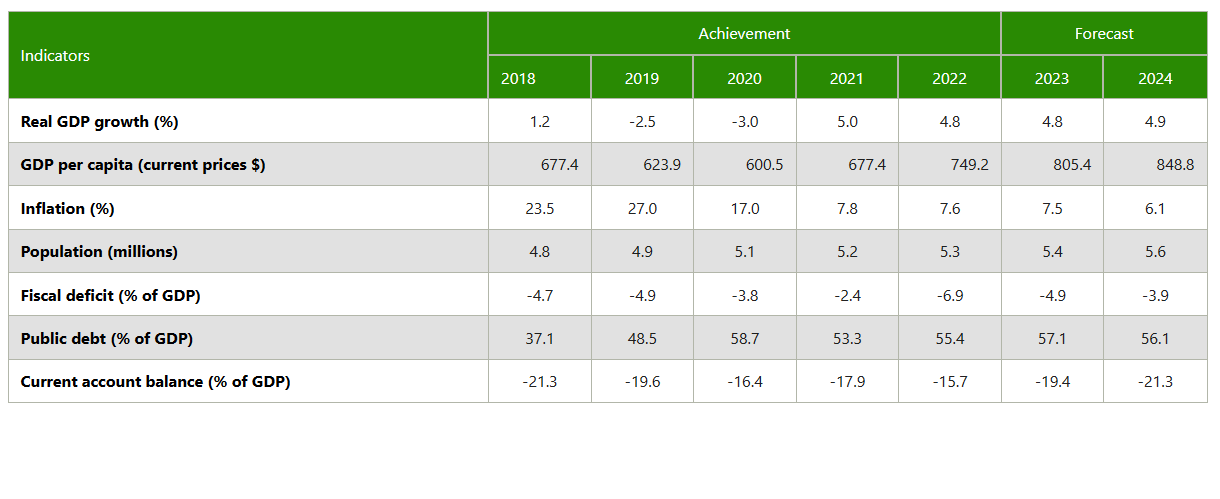
Macroeconomic Performance
Table 1: Overview of some macroeconomic indicators
 Liberia recorded an average growth rate of 1.1 per cent over the last five years. In 2022, Liberia experienced a 4.8 per cent expansion in economic activity, marking the second consecutive year of positive growth. This growth was primarily driven by the industry sector, particularly mining and agriculture. Liberia is one of two ECOWAS countries whose inflation in 2022 (7.6%) was lower than that of 2021 (7.8%). This was because the bumper harvest led to a decline in food prices, which counteracted the effects of non-food inflation on overall inflation. The fiscal balance worsened to -6.9 per cent of GDP, with the debt-to-GDP ratio increasing to 55.4 per cent of GDP in 2022. The current account balance, on the other hand, improved to -15.8 per cent of GDP.
Liberia recorded an average growth rate of 1.1 per cent over the last five years. In 2022, Liberia experienced a 4.8 per cent expansion in economic activity, marking the second consecutive year of positive growth. This growth was primarily driven by the industry sector, particularly mining and agriculture. Liberia is one of two ECOWAS countries whose inflation in 2022 (7.6%) was lower than that of 2021 (7.8%). This was because the bumper harvest led to a decline in food prices, which counteracted the effects of non-food inflation on overall inflation. The fiscal balance worsened to -6.9 per cent of GDP, with the debt-to-GDP ratio increasing to 55.4 per cent of GDP in 2022. The current account balance, on the other hand, improved to -15.8 per cent of GDP.
Outlook
Liberia’s economy is projected to grow by 4.8 per cent in 2023, driven by agriculture and mining growth, and further by 4.9 per cent in 2024. Average inflation is projected to decline marginally to 7.5 per cent in 2023 and further to 6.1 per cent in 2024. Fiscal balance is projected to narrow to -4.9 per cent of GDP and -3.9 per cent of GDP in 2023 and 2024, respectively, with debt-to-GDP increasing to 57.1 per cent of GDP in 2023 and declining to 56.1 per cent of GDP in 2024. The current account balance is projected to worsen to -19.4 per cent and further to -21.3 per cent in 2024.
Probable Headwinds
Commodity price declines could adversely affect Liberia’s GDP growth on the export side. Furthermore, unfavourable weather patterns will drive prices up in Liberia, given that food prices (which helped keep inflation in check), will begin to climb up to drive up inflation. Again, the funding squeeze poses a problem for Liberia’s ability to build critical infrastructure and expand key foreign exchange earners in the mining sector.

